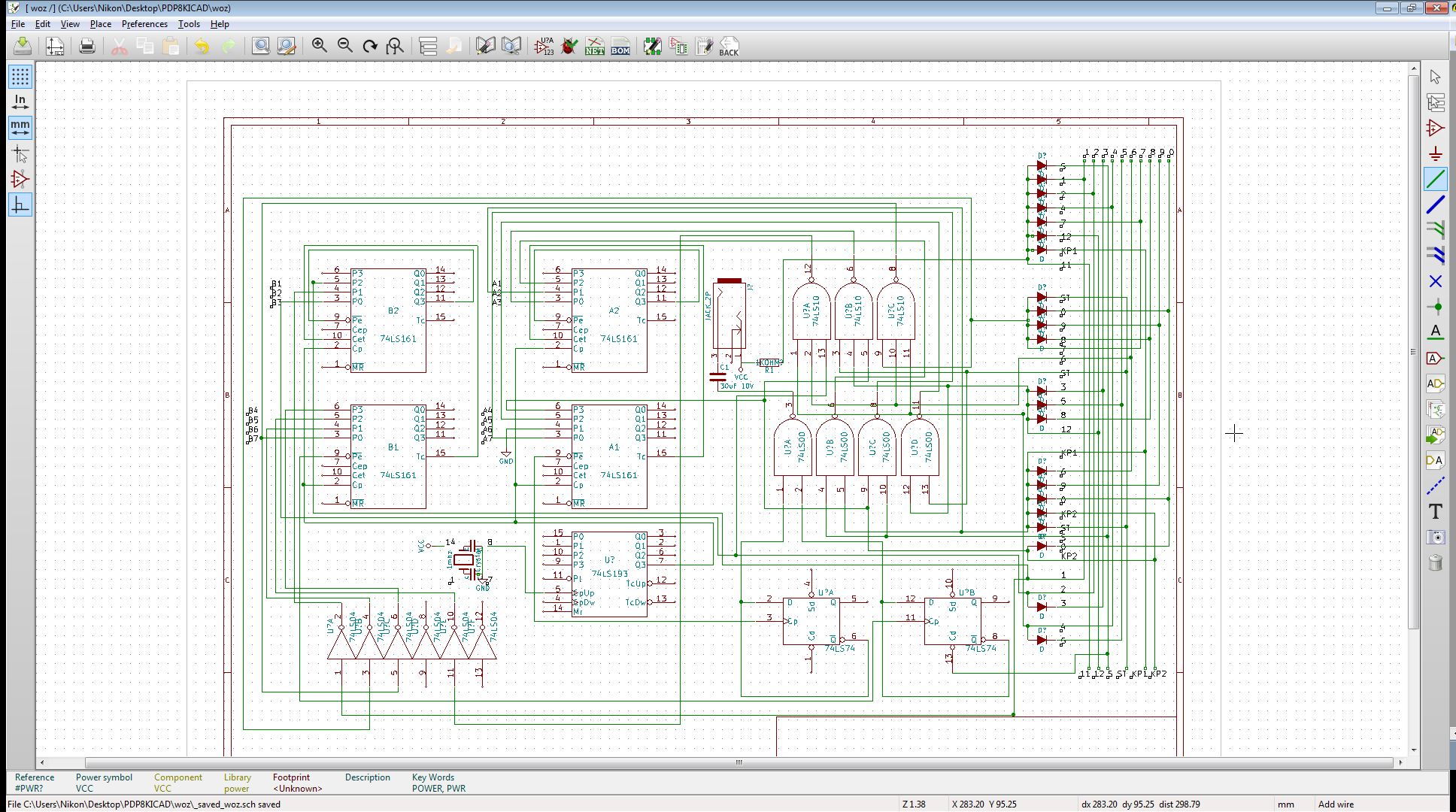There was a problem though: The blue box apps for android are bad! some are unstable/don't work or haven't been updated to work on newer devices, some output bad tones so you have to use multiple apps to complete one call, and ALL require the use of the touchscreen, which just doesn't feel right. I wanted to build a hardware bluebox, and using an Arduino seemed cheap. I searched the internet long and wide and found many analog circuits, and many blue boxes that it was a wonder it would work at all(!).
The ProjectMF guy pointed me to the explodingthephone archive (http://explodingthephone.com/) where a quick search turns up two of Steve Wozniak's hand drawn blue box schematics http://explodingthephone.com/docs/dbx0874.pdf and http://explodingthephone.com/docs/dbx0875.pdf . Seeing the master at work inspired me to figure out what the part numbers were, and I with the help of #hamradio on irc.freenode.net (thanks guys!) figured out that when he calls for a '0077' chip or what have you the full number is a '1820-0077 which is an HP Part number for a 7474 dual D Flip Flop!
I emailed WoZ just out of curiosity and to see if he could clear up how certain things in his circuit worked, and much to my surprise he took time out of his day to respond to me and clarify many of the questions I had about it. He's also a really awesome cool guy. He told me of a story of how he bought a bag of assorted diodes from radioshack, and how in circuit many of them were defective, and thus make the bluebox output the incorrect MF tones! Fortunately though even though he didn't have a frequency counter at his disposal, he did had a friend who could tell him, pitch perfect, what tone or tones were coming out of his box when the keys were pressed. Once WoZ knew what tone or tones came out, he then KNEW which diodes were defective!
Anyway back to the story: you can cross reference most of the old part numbers to get newer equivalents! I went out to the radioshack and my local store fry's electronics and managed to source all the 74 series logic, capacitors, resistors, and I even picked up 2 assorted bags of diodes at radio shack to build it with, although I think the quality control might be better than it was in his day.
After trying to build it I realized WoZ had a really great way of drawing things down as to not be inefficient, this means however that when it came to wiring up the diode matrix to the buttons I got totally lost, so one of my efforts has been to redo the schematic, with the parts I souced, in KiCad, which I am learning as I am doing. I've been streaming this effort live @ https://www.livecoding.tv/cprossu/
This is my first time trying to document a project, and I am in no way an electronics or radio expert, so I will as Dave would put it, fall into all the traps for Young Players.
 cprossu
cprossu
Outstanding!